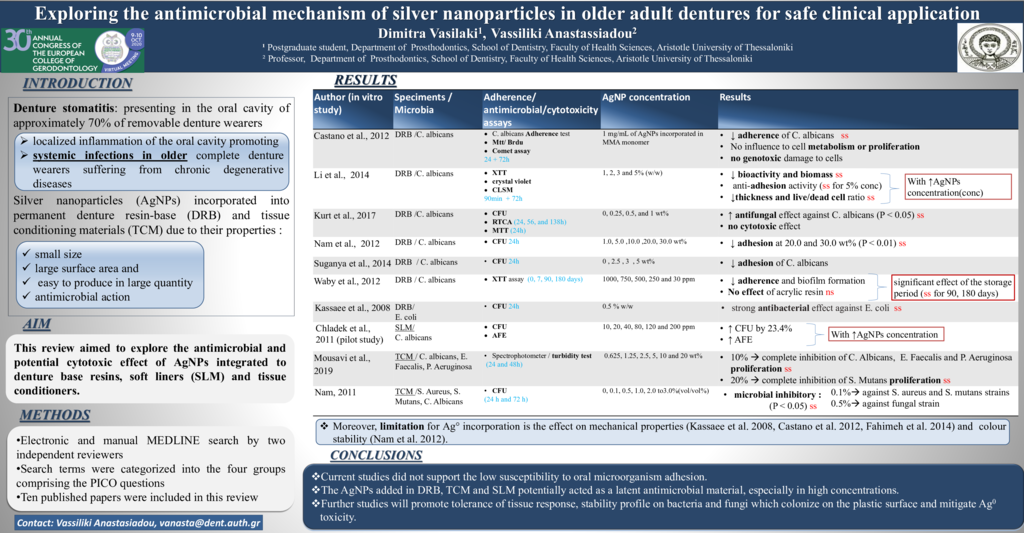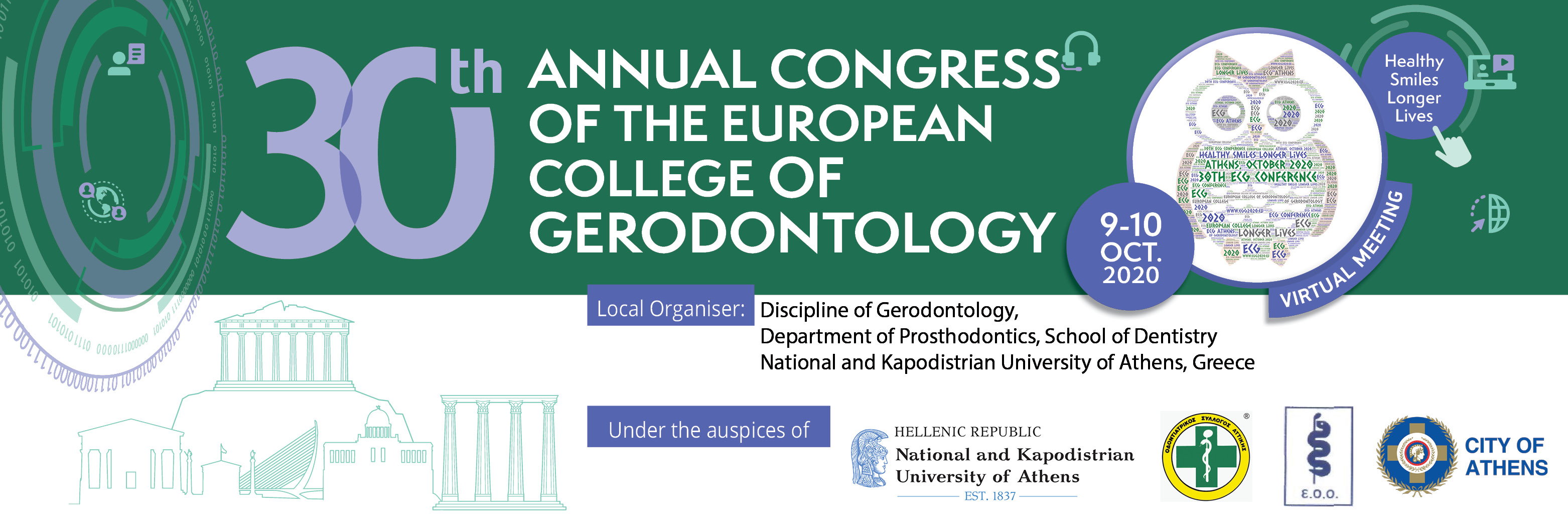Background and aim: Conventional denture resin-base (DRB) often cause damage to the oral supporting mucosa due to trauma and integrity loss. Additionally, they promote biofilm formation that causes stomatitis. Microbial growth results from the microbial cells adherence, which is promoted by a rough surface and from adhesive interactions between Candida species and oral bacteria. Denture stomatitis being resistant to conventional treatment of geriatric denture- bearing patients under medically compromised conditions is of significant concern for limitation and colonization of microbes and yeasts. Silver nanoparticles (AgNPs) are currently, successfully, incorporated into permanent DRB and tissue conditioning materials (TCM) to promote mucosa health due to their fundamental properties such as the small size, large surface area and easy to produce in large quantity together with their antimicrobial action. However, there is still no clear evidence as to the mechanism of the silver nanoparticles antimicrobial effect. This review aimed to investigate current evidence and specify conditions potentially contributing to the antimicrobial effect. Methods: Two independent reviewers to identify English language articles, reporting on the antimicrobial effect of DRB and TCM containing silver nanoparticles, conducted an electronic search. Finally, ten published papers were included in this review. Results: A wide variation in protocol designing was recorded. Surface roughness confirmed the adherence and colonization of microorganisms. A decrease of C. Albicans bioactivity and biomass were highlighted, where AgNPs reinforced DRB and TCM. However, the AgNPs presented a negative effect on mechanical properties and aesthetics. The antibacterial and antifungal activity of AgNPs was concentration-dependent. A significant factor for a no clear insight into the mechanism of AgNPs action included the missing information of optimal Ag concentration regarding the silver content and possible disruption of the oral microflora. Clear evidence regarding toxic Ag excess effects and mechanical stability was also missing for proper and safe clinical application. Conclusions: Current studies did not support the low susceptibility to oral microorganism adhesion. The AgNPs added in DRB and TCM potentially acted as a latent antimicrobial material. Further studies will secure tolerance of tissue response, toxicity and stability profile on bacteria and fungi, which colonize on the plastic surface.
- 25 views



